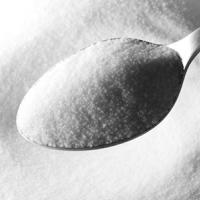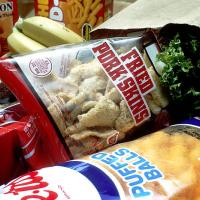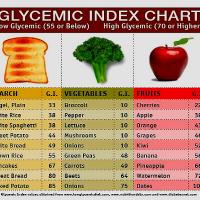Ketosis: Mystery or Misconception? -- Part 2
 by Tanya Zilberter, PhD
by Tanya Zilberter, PhD
Many, if not most, dieticians and nutritionists continue to warn dieters against the dangerous consequences of ketosis. However, the facts are...
Part 2.
To read part 1, click here!
Many, if not most, dieticians and nutritionists continue to warn dieters against the dangerous consequences of ketosis. However, the facts are:
Babies are naturally adapted to ketosis, thanks to their high-fat diet of mother's milk. In adults, the liver is the only organ other than the brain that can use ketones for fuel and produce them out of circulating free fatty acids (FFA.)
FFA are not created equal. Some enter the liver to be converted into ketones easier than others. The "easiest" FFA originate from dairy ñ giving us one more reason to regard this food group. It may well be that so-called French and Mediterranean paradoxes can be explained, in part, by profound use of cheeses and yogurts.
Interestingly, there are two other less significant sources for ketone productions: amino acids (leucine and isoleucine) and acetate produced in the process of food fermentation in the intestines. One of the most well-documented successful low-carb diets, the GO-diet, prescribes the dairy products probiotics that promote intestinal fermentation as essential foods.
The fats we seek to get rid ourselves of
However, the fats we seek to get rid ourselves of -- those in our fat depots -- are not the "easy" ones to be converted and used. The success of their conversion, or "burning," depends heavily on the hormones adrenaline and noradrenaline. These hormones' opponent and enemy, insulin, inhibits the "burning" activity. This is why, after a high-carbohydrate meal, when insulin secretion and its concentration in the blood are high, the release of fatty acids from fat depots (adipose tissue) is suppressed. And this is why insulin has a bad reputation -- unfairly so, because in the absence of high-carbohydrate meals, the problem doesn't exist.
To the contrary, during exercise or stress, when adrenaline and noradrenaline levels are elevated, the "burning" of fatty acids is increased.
KetoStix controversy
Another interesting fact that can unpleasantly surprise those who religiously aim to increase ketone bodies' concentration and who hold their breath while checking the KetoStix: increased ketone bodies concentration suppresses the fat burning! It happens because ketones increase the secretion of insulin and directly inhibit lipolysis in the adipose tissue.
There are various states of ketosis:
Physiological Ketosis
As we've mentioned, suckling babies (high-fat diet of the milk) are in a natural state of ketosis. Another natural ketosis occurs after exercise, caused by the depletion of stored carbohydrate reserves (glycogen) in the liver. Yet another natural state, which less desirable, is fasting that is prolonged beyond 24 hours. All these situations have in common a low carbohydrate-availability status.
The first event, after withdrawal of food (or carbohydrates), is a lowering of plasma insulin accompanied by stimulation of fat burning. However, for the first 8-10 hours, there is no increase in blood-ketone bodies.
Once food is introduced back into the system (unless it consists of low-carb foods,) when insulin concentration rapidly increases and FFA concentration decreases, there's a parallel decrease in ketone bodies. If the meal consists mainly of fats with little carbohydrates, the liver senses a continuing decrease in plasma insulin and the concentration of ketones remains high. This is why the truly low-carbohydrate diets sometimes are called regulated fasting.
Pathological Ketosis
The best example of pathological ketosis is insulin-dependent or Type I diabetes. The changes in this condition are similar to those during fasting, but they are dangerously pronounced. Insulin is pathologically very low and therefore there is no means to restrain adrenaline, noradrenaline and glucagon from excessive fat burning that can actually cause the deterioration of tissue.
Metabolic Acidosis
The ketone bodies acetoacetate and hydroxybutyrate are both strong acids, which makes them metabolically disadvantageous since they decrease in the blood pH. The symptoms of severe acidosis include depression, weakness, anorexia and vomiting, and may eventually lead to coma.
To the contrary, even prolonged fasting, where the blood ketone bodies may reach 8-10 mmol/l, does not cause a serious disturbance of the acid-base balance because there are natural biochemical-protective mechanisms, including acetone conversion into glucose in the liver.
1. Bach AC, Ingenbleek Y and Frey A (1996). "The Usefulness of Dietary Medium-Chain Triglycerides in Body Weight Control: Fact or Fancy?" Journal of Lipid Research 37:708-726.
2. Girard, J.R.; FerrË, P.; PËgorier, J.P.; and DuËe, P.H. (1992). "Adaptations of Glucose and Fatty Acid Metabolism During Perinatal Period and SucklingñWeanling Transition," Physiological Reviews 72:507-562.
3. Krebs, H.A.; Woods, H.F.; and Alberti, K.G.M.M. (1975). "Hyperlactataemia and Lactic Acidosis," Essays in Medical Biochemistry 1:81-103.
4. McGarry, J.D. and Foster, D.W. (1980). "Regulation of Hepatic Fatty Acid Oxidation and Ketone Body Production," Annual Review of Biochemistry 49:395-420.
5. Nehlig, A. and de Vasconcelos, A.P. (1993) "Glucose and Ketone Body Utilization by the Brain of Neonatal Rats," Progress in Neurobiology 40:163-221.
6. Owen, O.E.; Morgan, A.P.; Kemp, H.G.; Sullivan, J.M.; Herrera, M.G.; and Cahill, G.F. (1967). "Brain Metabolism During Fasting," Journal of Clinical Investigation 46:1589-1595.
7. Page, M.A. and Williamson, D.H. (1971). "Enzymes of Ketone Body Utilization in the Human Brain," Lancet 2:66-68.
8. Porter, R. and Lawrenson, G. (eds) (1982). "Metabolic Acidosis." Ciba Foundation Symposium 87: London: Pitman.
9. Robinson, A.M. and Williamson, D.H. (1980). "Physiological Roles of Ketone Bodies as Substrates and Signals in Mammalian Tissues," PhysiologicalReviews 60:143-187.
10. Williamson, D.H. (1982). "The Production and Utilization of Ketone Bodies in the Neonate." In: Jones CT (ed). The Biochemical Development of the Fetus, pp 621-650. Amsterdam: Elsevier Biomedical.
11. Williamson, D.H. (1987). "Brain Substrates and the Effects of Nutrition," Proceedings of Nutrition Society 46:81-87.
12. Zammit, V.A. (1996). "Role of Insulin in Hepatic Fatty Acid Partitioning: Emerging Concepts," Biochemical Journal 314:1-14.
Related Articles
-
Low Carb Energy Drink
If you want to lose weight fast, eating green leafy vegetables 3 time
-
Why Low Carb Diets Cause Bad Breath
Within todays diet-conscious America, the low carb high protein varie
-
Is The Low Carb Diet Right For You?
The rate of obesity in humans is increasing each year and it looks li
-
Sugar Free Diets
More and more people are opting for sugar free diets.
-
Top 10 Low Carbohydrate Foods for Your Fat Shredding Diet Plan
Its no myth, consuming low carbohydrate foods at the proper
-
How You Can Simply Control Your Appetite
Staying in keeping with your daily diet can be difficult, particular
- DON'T MISS
- The Origin Of Todays Low Carb Diets
- Helpful Pointers For Succeeding With Low Carb Diets
- Its not that bad. The biggest lie we tell ourselves.
- About Fat Burning Index Plans
- Diets -inquiries Into Preferences
- Beat The Carb Cravings
- Meal Replacement Energy Bars
- How to Make a Low Carb Diet Food List Quickly
- Still Eat Conventional Meat Or Poultry? Preservatives, Antimicrobials, Antifungals, And Viral Sprays
- Low-Carb Diets and Your Kidneys




